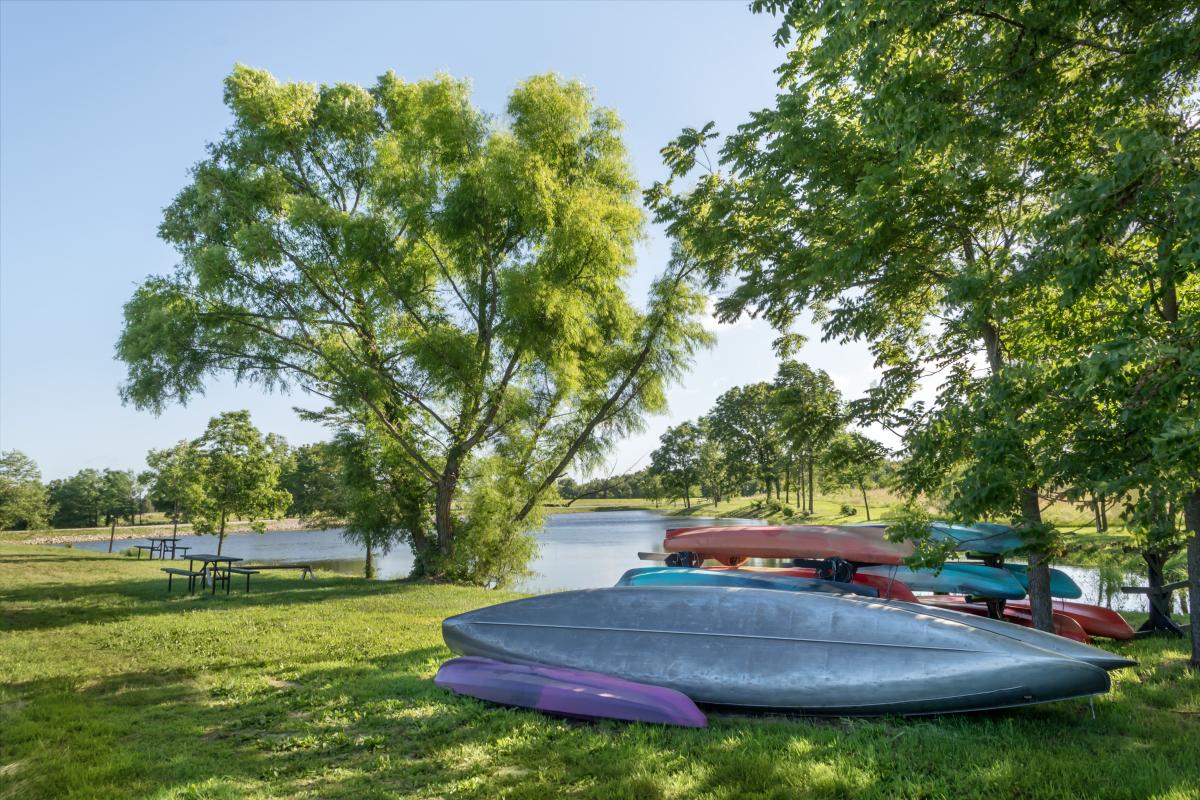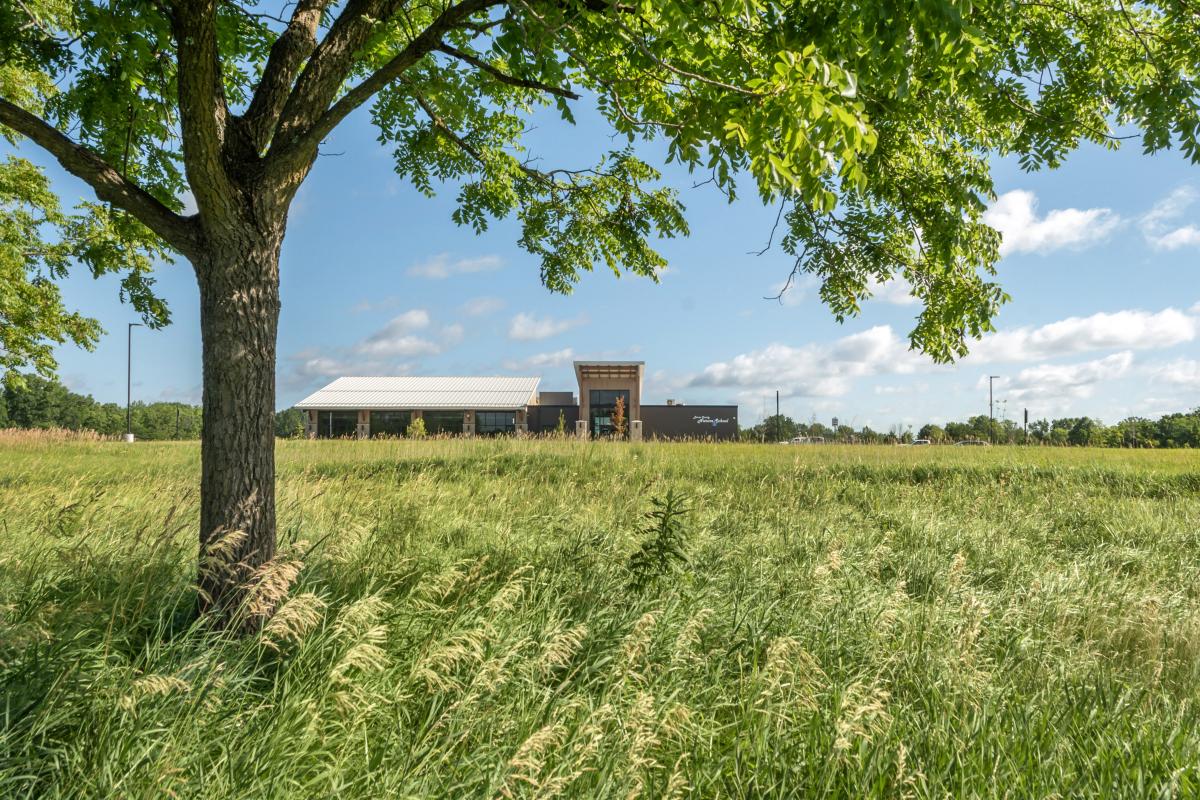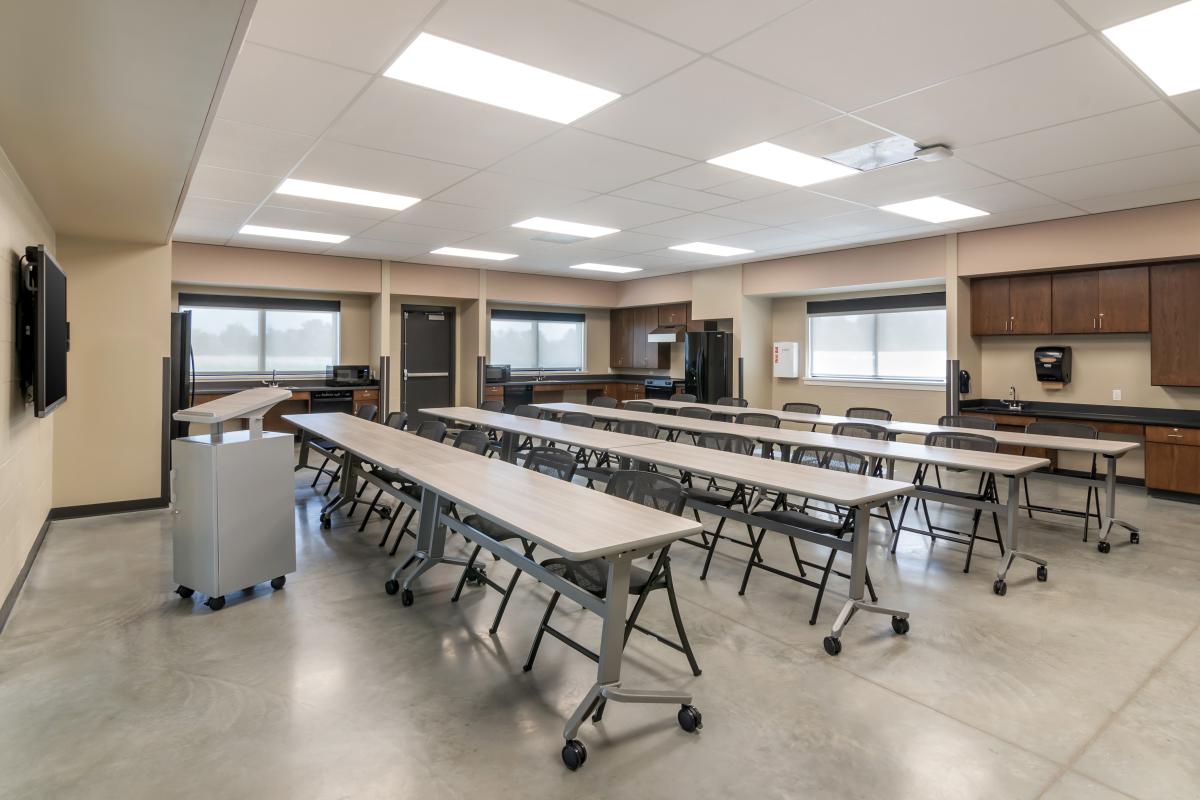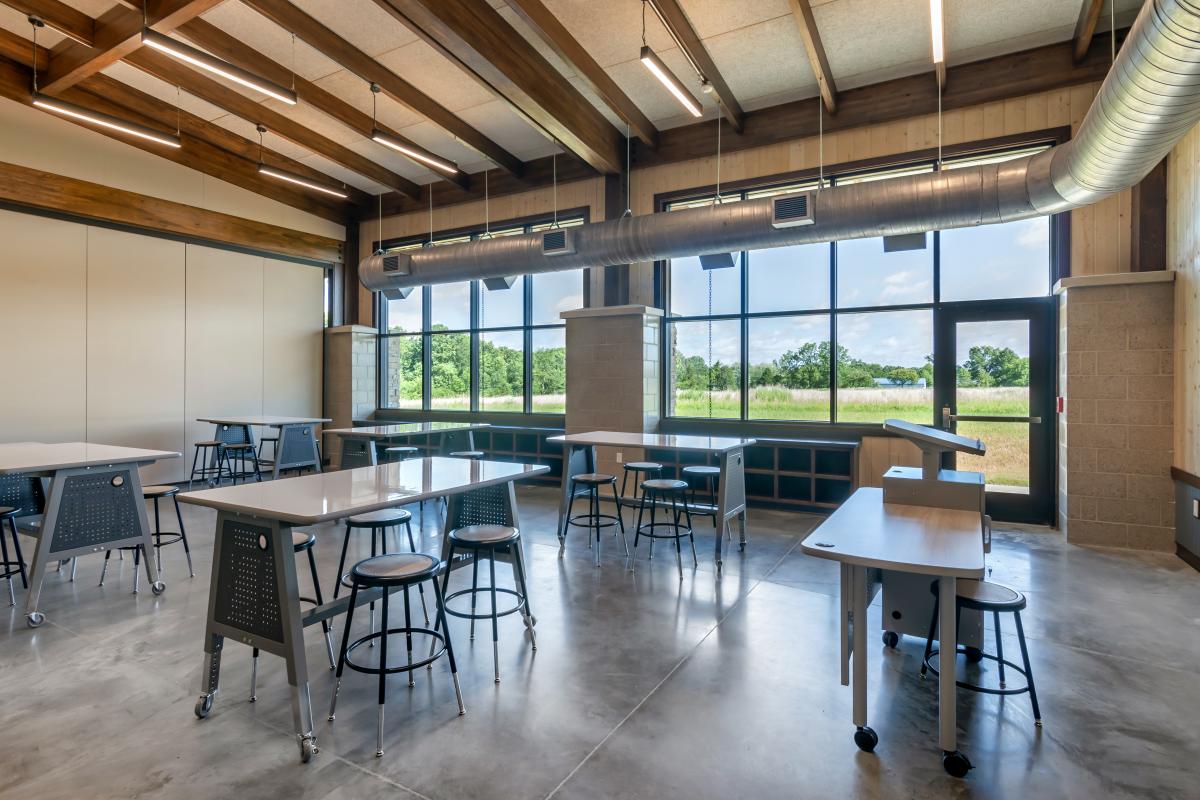A unique school in Boone County, Missouri, gives all of the county’s fifth graders an opportunity to learn about the natural world. Designed and furnished with the help of School Specialty, the school serves as a home base for learning within nature.
A partnership between the Columbia Public Schools and the Missouri Department of Conservation, the 8,000-square-foot, $7 million Boone County Nature School officially opened in August 2024. Students from the district will attend the school for a total of seven days in their fifth-grade year, cycling through in shifts as they learn about Missouri ecosystems, track the migration of birds and butterflies, and work on sustainability projects.

Much of their learning takes place outdoors, but students are also learning within four nature-themed classrooms and a wet lab space. The curriculum focuses on four key ecosystems within Missouri, and each classroom is designed to reflect one of these types of environments with an aquatics-themed room, a cave room, a forest room, and a prairie room.
“Kids aren’t outside as much anymore,” said Ragan Webb, elementary science coordinator for the Columbia Public Schools—and she noted that the fifth-grade nature school program aims to change that.
Aside from the mental health benefits of being outdoors, the district thought it was important for students to learn about conservation, Webb added: “Teaching them about the history and stewardship of this land hopefully will make them good stewards and citizens going forward.”

Connecting to Nature
The facility sits on more than 100 acres of land donated by Columbia School Board President Suzette Waters’ late father-in-law, Hank Waters, and his wife, Vicki Russell.
To design the school’s indoor learning environments, the district turned to School Specialty and its Projects by Design® team for help.
“We wanted a lot of natural materials, so that even when students were inside, they were still connected to the outdoors,” Webb said.

School Specialty Learning Environment Specialist John Hoey shared catalogs and brought samples of tables for Webb and her team to evaluate. “He also provided drawings and gave us visuals to help us understand how we could use the space,” said Dana Reynolds, the district’s purchasing director.
In classrooms where direct instruction takes place, district officials chose tables with a natural wood laminate finish to reinforce the idea of being in nature. For the hands-on, project-based learning labs, they chose Classroom Select Construct-IT makerspace tables with whiteboard surfaces.

“We like the style of these tables,” Reynolds said. “They allow students to sit or stand as they work.”
All of the tables are on locking casters, so they can be moved around the room easily to accommodate different types of activities. “The community will be using this facility as well,” Webb said, “so the more flexible we could be with the furniture, the better.”
Highly Functioning Design
Every fifth grader in the district attends the Boone County Nature School for three days during the fall, two days in the winter, and two days in the spring. “That way, they get to experience the different seasons and see how things change over time,” Webb explained.
Although the nature learning program is designed for fifth graders, students in other grades may visit the nature school on field trips and science camps.
Students in the nature learning program are doing real “citizen science,” Webb noted. They’re collecting data about the migration patterns of birds and butterflies and creating maps with this information. They’re also designing and completing sustainability projects to bolster land and animal conservation efforts.

What’s more, the learning environments that Hoey designed in partnership with district officials are playing a key role in supporting these activities. “Having the ability to move the tables around has come in extremely handy,” Webb said. And the whiteboard surfaces make instruction and ideation both simple and spontaneous.
“Students love the excitement of writing on the tables,” Webb observed. “And they come clean very easily. We have sixteen hundred kids who’ve cycled through twice already, and the tops of the tables are all still white.”
Students in the nature learning program are highly engaged in their education, she noted: “We have only had one behavior incident this whole year. Students enjoy getting out and learning in this space. They’re learning without even realizing they’re learning, and they’re having fun while doing so.”
She concluded: “The most common comment we hear from them is: ‘I wish we could learn like this every day.’”